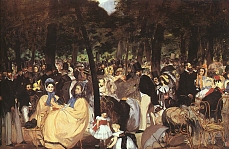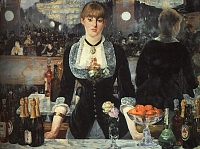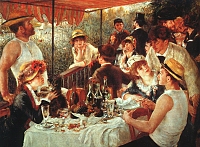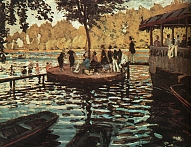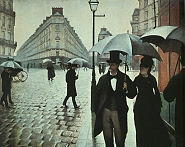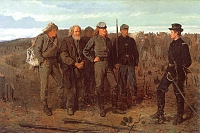British Realists
In England, a number of artists, some of them members of the Pre-Raphaelite Brotherhood (PRB), embraced Realism in technique without abandoning literary and historical subject matter. John Everett Millais (1829-96) was a founder of this group which wanted to follow the examples of painters before Raphael (thus the name) who they believed painted sincerely without artificiality and idealization. The meticulous rendering of realistic details is the hallmark of PRB painting.
|
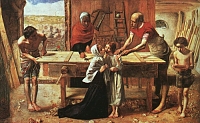 |
This painting evoked much negative criticism, primarily because of its realistic details--the literal quality of the setting (especially the strewn wood shavings on the floor) and the ordinariness (some critics said ugliness) of the Virgin and young Jesus in the center of the work. Still, this is a subject that most Realists would avoid. |
| |
|
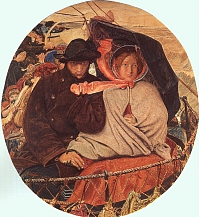 |
 Brown was not an official member of the PRB, but he follows their emphasis on meticulous particulars. Note, for example, the rendering of the English wool in the garments and the sense of the weather in the scene. Unlike the PRB, Brown is engaged by contemporary issues. This middle-class couple, down on their luck, is emigrating to Australia in hopes of a better life. The tiny baby is almost totally concealed beneath its mother's cape. Brown was not an official member of the PRB, but he follows their emphasis on meticulous particulars. Note, for example, the rendering of the English wool in the garments and the sense of the weather in the scene. Unlike the PRB, Brown is engaged by contemporary issues. This middle-class couple, down on their luck, is emigrating to Australia in hopes of a better life. The tiny baby is almost totally concealed beneath its mother's cape. |
| |
|
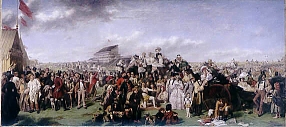 |
William Powell Frith (1819-1909)
Derby Day, 1856-58Frith specialized in panoramic paintings of modern life packed with human interest and detail. These realistic paintings were very popular with the public. Frith's style is realistic but unlike some realists, he is not a social critic. |
| The painting below at the left was also executed as a wood engraving published in Harper's Weekly," a popular magazine. The little red school house in the background and the lively young boys were popular subjects among the middle-class reading public. The painting at the right is typical of many of Homer's marine subjects with the muscular African-American imperiled by the frightening sea. |
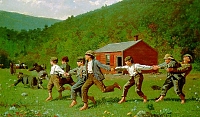 |
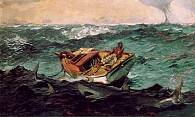 |
| |
|
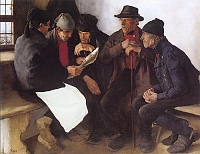 |
Leibl, the most important German Realist painter, learned from the works of the French founders of Realism. His emphasis is on the details of country life with an almost documentary, objective approach. |
| |
|
Realism was an important movement in Russia, largely because of its social concerns (serfdom was abolished in 1861) and rejection of idealization. Ilya Repin (1844-1930) painted portraits, even a few history paintings, and genre scenes, like the two below. In general, his approach is objective, without much discernible artistic comment. The paintings seems factual; note the details conveyed by his titles.
|
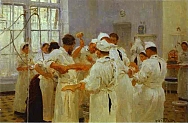 |
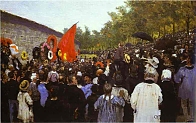 |
| |
|
"Isms" come and go, but Realism has had staying power, partly because of its focus on contemporary life, partly because of its aesthetic aims. I invite you to skip ahead to see some examples of 20th century Realism.
|
